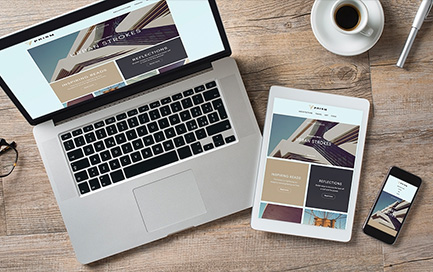European tour packages offer a mix of value and experiences tailored to your interests. You can choose from cultural immersions, adventure tours, or guided visits, each presenting unique highlights. Prices vary based on accommodations, meals, and included activities, so it’s important to compare what’s offered. Guided tours provide expert insights and ease of planning, while independent travel lets you craft your journey and explore freely. Seasonal trends and exchange rates can affect costs, making value assessments essential. If you explore further, you’ll discover more tips to find the perfect tour package for your travels.
Types of European Tour Packages
When planning your adventure, you’ll find a variety of European tour packages available this year, tailored to fit different interests and budgets. If you’re keen for cultural immersion, consider packages that focus on local traditions, cuisine, and art, allowing you to engage deeply with each destination. These tours often include guided visits to museums, historical sites, and local markets, enhancing your understanding of Europe’s rich heritage.
Alternatively, if you’re seeking adrenaline-pumping experiences, adventure tours might be your best bet. These packages can include activities like hiking in the Alps, kayaking in the fjords, or cycling through charming villages.
No matter what you choose, there’s a wealth of options to guarantee your European adventure is both fulfilling and memorable.
Cost Comparison of Packages
When comparing European tour packages, you’ll want to look closely at what’s included in each option.
Understanding the price range variability can help you find the best fit for your budget.
Let’s break down the key factors that influence costs and inclusions.
Package Inclusions Analysis
To make an informed choice, you should closely examine what each tour package includes, as the cost can vary considerably based on these offerings.
Look for specific details that might influence your decision, such as:
- Accommodation options: Are they hotels, hostels, or unique stays?
- Meal inclusions: Do they cover breakfast, half-board, or all meals?
- Guided tours: Are local guides included in the package?
- Transportation: Is airport transfer or local transport covered?
- Attraction access: Are entrance fees for major sites included?
Price Range Variability
Understanding what’s included in each tour package can greatly impact the price range you’ll encounter, as costs can vary widely based on the level of service and amenities provided.
You might find that some packages offer luxurious accommodations and gourmet meals, while others stick to basic lodging and meals.
Euro currency fluctuations can also influence overall costs, making it crucial to check current exchange rates.
Additionally, seasonal pricing trends play a significant role in how much you’ll pay; traveling during peak tourist seasons often means higher prices.
To get the best value, compare various packages, considering both included services and timing to ascertain you’re making an informed decision that fits your budget.

Value of Guided Tours
Guided tours offer you expert insights and unique experiences that enhance your exploration of Europe’s rich culture and history. By choosing a guided tour, you tap into several guided tour advantages that make your journey more enjoyable and secure, ensuring traveler safety throughout your trip.
Knowledgeable guides share local stories and history.
Pre-planned itineraries save you time and effort.
Group travel fosters connections with fellow travelers.
Exclusive access to attractions and events.
Assistance in overcoming language barriers and cultural nuances.
With these benefits, you’ll discover hidden gems and fully immerse yourself in the local culture, all while enjoying peace of mind knowing that experienced guides are looking out for you.
Flexibility in Independent Travel
While guided tours offer valuable insights, independent travel grants you the freedom to explore Europe at your own pace and tailor your itinerary to your interests.
You can create independent itineraries that reflect what you truly want to experience. Whether it’s spending extra time in a quaint café or veering off to a hidden gem, you have the power to make spontaneous decisions.
This travel spontaneity allows you to connect with locals, taste regional delicacies, and immerse yourself in the culture without a strict schedule. If you find a beautiful park or an intriguing museum, you can take your time without worrying about missing the bus.
Ultimately, independent travel gives you the flexibility to craft unforgettable memories.
Cultural Experiences Offered
Many tour packages in Europe provide unique cultural experiences that let you dive deep into the local traditions and lifestyles.
You’ll enjoy cultural immersion through various activities that enhance your understanding of each destination. Here are some experiences you might encounter:
- Cooking classes that teach you how to prepare local cuisine
- Guided tours of historical sites with expert insights
- Traditional festivals showcasing regional customs and arts
- Art workshops where you can create your own masterpieces
- Home stays with local families for an authentic experience
These immersive opportunities not only enrich your travel but also create lasting memories, making every moment valuable.
Embracing the local culture allows you to connect with Europe in a way that transcends typical sightseeing.
Tips for Choosing the Right Package
When you’re picking the right European tour package, it’s essential to assess your travel preferences first.
Make certain to compare what each package includes and their costs, so you get the best value for your money.
Assess Your Travel Preferences
To choose the right European tour package, start by pinpointing your travel priorities and personal interests. Knowing what matters most to you will help narrow down the options.
Consider the following factors:
- Cultural experiences: Are local traditions and history important?
- Adventure activities: Do you seek thrill, like hiking or biking?
- Food and wine: Is culinary exploration a top priority?
- Relaxation: Are you looking for downtime in scenic settings?
- Social interactions: Do you prefer small group tours or private experiences?
Compare Inclusions and Costs
Now that you’ve assessed your travel preferences, it’s time to compare the inclusions and costs of different European tour packages to find the best fit for your adventure.
Start by evaluating what each package offers—meals, accommodations, transportation, and guided tours.
Pay attention to budget considerations; some packages may seem cheaper but lack essential inclusions, leading to unexpected expenses.
Look closely at the itinerary planning as well; verify it aligns with your interests and desired pace of travel.
Don’t forget to check for hidden fees or optional add-ons that could inflate the cost.
Research Tour Operators Thoroughly
Thoroughly researching tour operators can greatly enhance your chances of finding a package that perfectly matches your travel style and budget.
Start by evaluating each operator’s reputation and diving into customer reviews. This will help you gauge the quality of service and experiences offered.
Here are some tips to guide your research:
- Check the operator’s credentials and industry affiliations
- Read recent customer reviews on multiple platforms
- Ask friends or family for recommendations
- Compare packages from several operators for better insights
- Look for clear communication and responsive customer service











